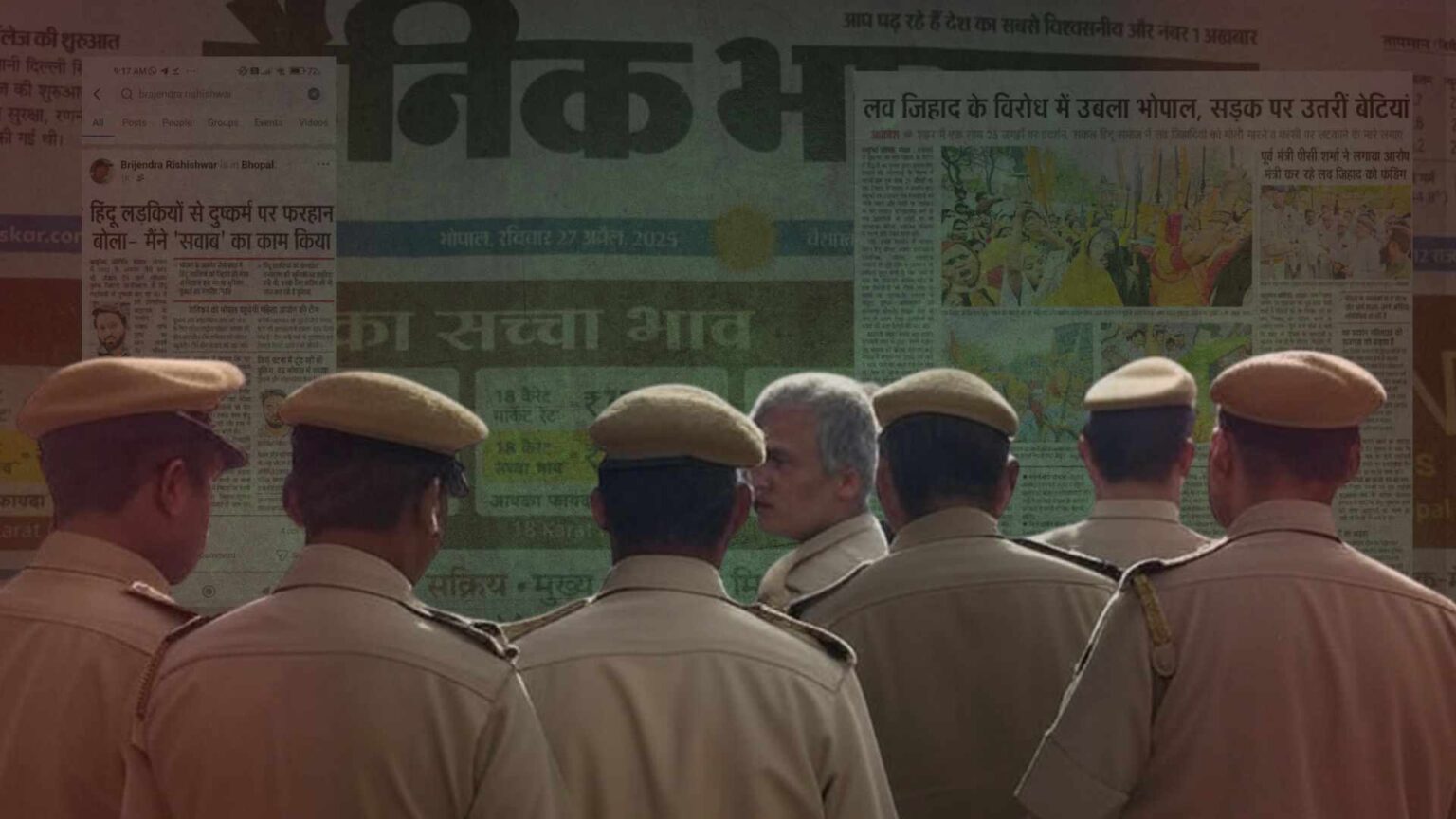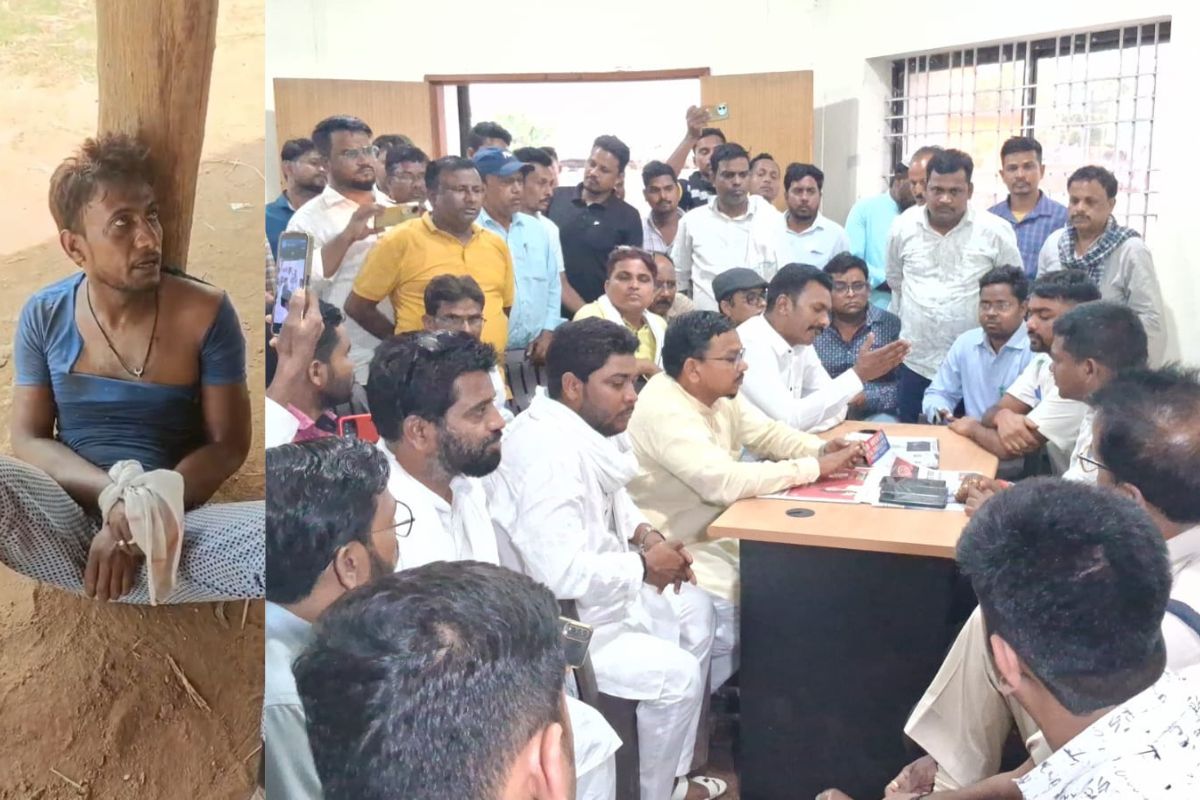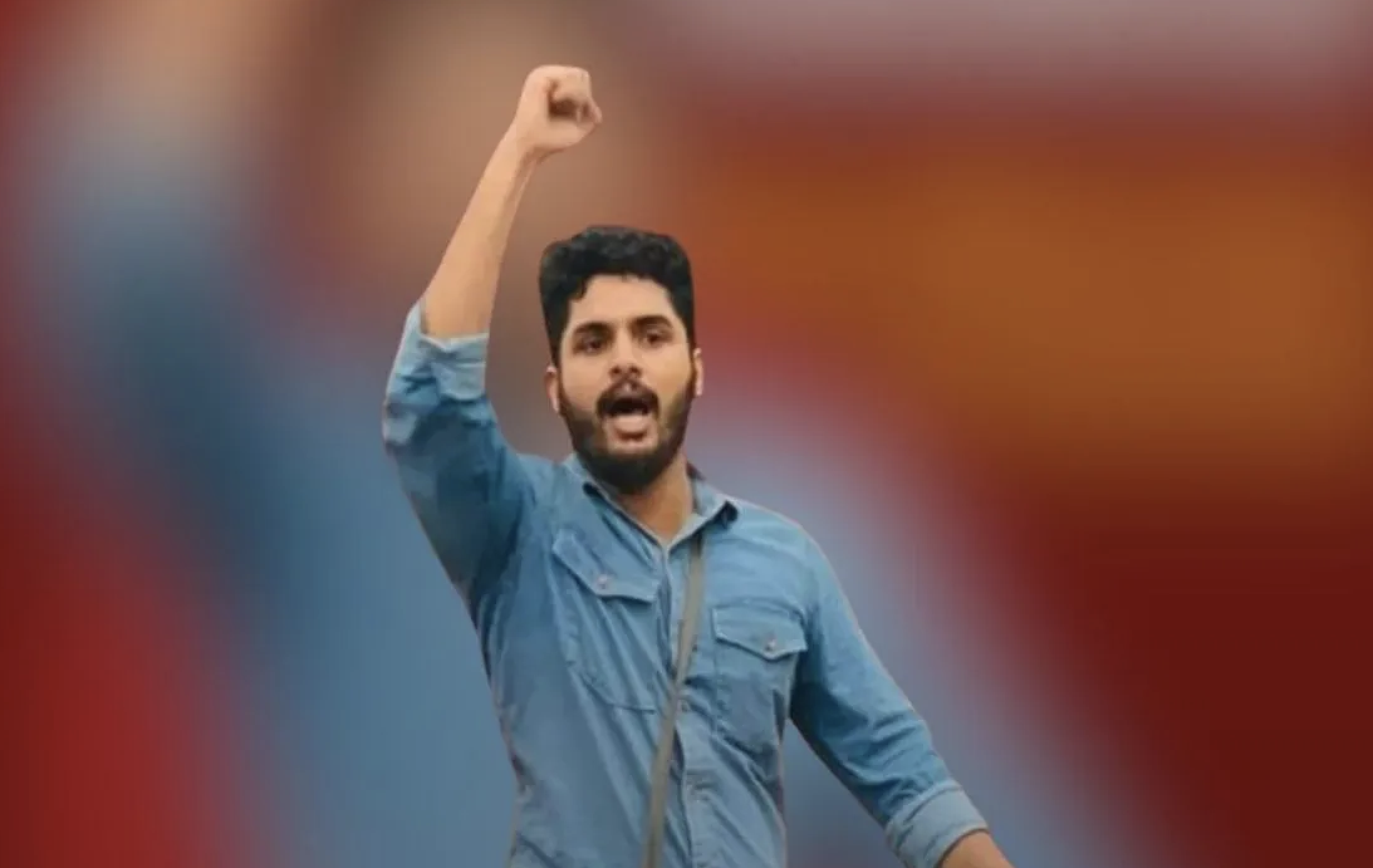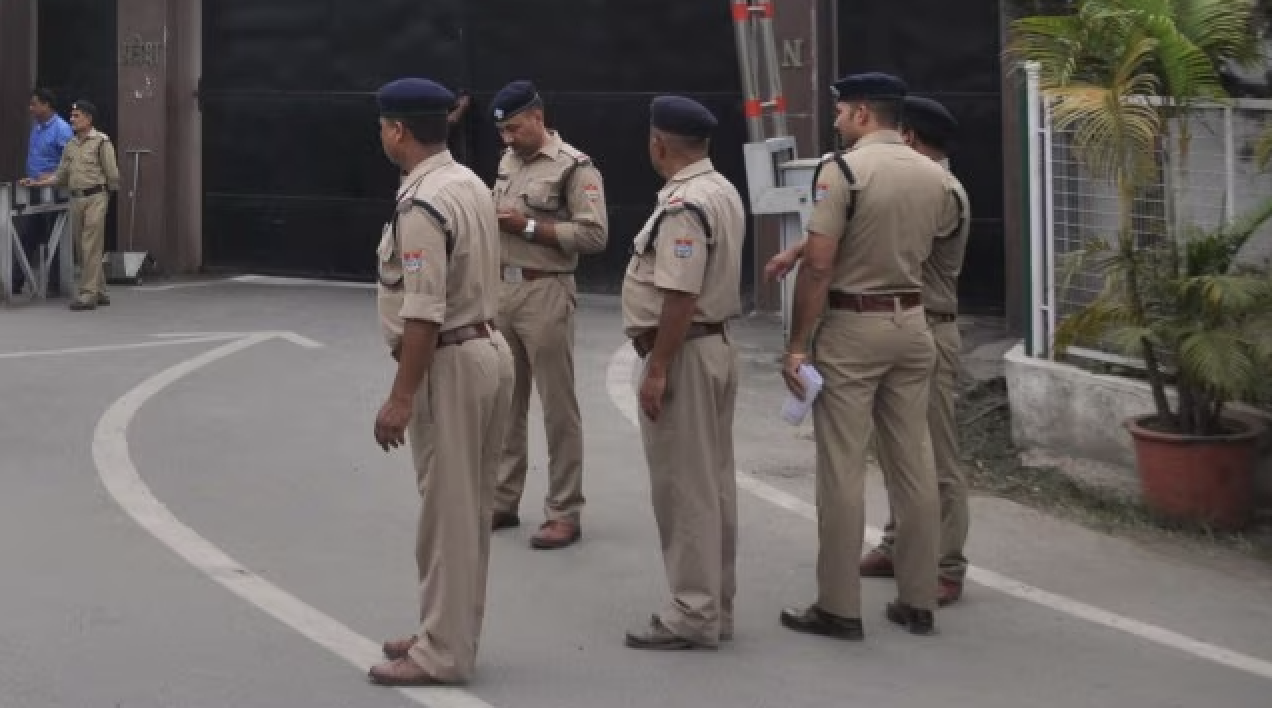A screaming mob of thousands of Hindu militants stormed a 16th-century mosque here today and demolished it with sledgehammers and their bare hands, plunging India into a political and religious crisis.
The destruction of the mosque, which has been a focus of tensions between Hindus and Muslims for several years, raised the danger of a renewal of the conflicts between the groups that have claimed tens of thousands of lives in the last four decades.
Prime Minister P. V. Narasimha Rao addressed the nation tonight, speaking, he said, “under the grave threat that has been posed to the institutions, principles and ideals on which the constitutional structure of our republic has been built.” ‘A Matter of Great Shame’
The destruction of the mosque, the Prime Minister said, “is a matter of great shame and concern for all Indians.”
“This is a betrayal of the nation and a confrontation with all that is sacred to all Indians as the legacy which we have inherited as a part of our national ethos.”
Of India’s 882 million people, 83 percent are Hindus and 11 percent Muslims. When India and Pakistan were created in the partition of British India in 1947, India, unlike its Islamic neighbor, was constituted as a secular state in which no religion was to exercise political dominance. But over the years, tensions between Hindus and Muslims have erupted periodically, challenging India’s viability as a secular society.
After Hindu militants stormed the mosque in 1990, about 1,000 people died in violence and the central Government was brought down. Today’s demolition was the first time Hindus had razed a mosque since partition.
Four Hindus were killed and at least 100 were injured by falling debris, news reports said.
The attack came after Hindu revivalist leaders from political and religious groups called for Hindus from around India to come to Ayodhya, in Uttar Pradesh State in northeastern India, to begin construction of a temple to the Hindu god Ram, also called Rama, and to destroy the Mosque of Babar. Hindu fundamentalists say the mosque was built on a sacred Hindu site, the very spot where Ram was born.
The mosque has been an important holy site for Muslims since it was built in 1528 by the Emperor Babar, who led the Mogul conquest of India. No Longer in Use
The mosque was no longer used for prayers, but Muslims had refused to relinquish control of the building, fearing that that could lead to the dispossession of Muslim shrines throughout India.
India’s Supreme Court ruled last week that there should be no construction of the Hindu temple, which was to be built on the land occupied in part by the mosque, and that the mosque itself should remain undamaged.
Several Hindu religious leaders and the state government of Uttar Pradesh, which is run by the Hindu fundamentalist political party, the Bharatiya Janata, said at times in the last week that they would obey the court’s injunction.
As word of the mosque’s destruction filtered out of this dusty holy city, the Chief Minister of the state announced his resignation, which came before his certain dismissal by Prime Minister Rao for failing to protect the mosque.
Immediately afterward, the President of India, Shankar Dayal Sharma, took control of the state and dismissed the state legislature. The central Government also ordered security forces to move here to restore order. Army Put on Alert
The Indian Army was put on alert in six states, and curfews were declared in many cities and towns with mixed populations of Hindus and Muslims.
For the last week, tens of thousands of Hindus have been streaming into this town, sent from around the country by organizers from the National Volunteer Force, the World Hindu Council and the Bharatiya Janata Party, which is the main opposition party in Parliament. They were told that they would begin building an immense temple to Ram at precisely 12:26 P.M. today, a time deemed propitious by Hindu holy men.
The Hindus descended on this town of 15,000, home to an 8,000 shrines, temples and other holy buildings, moving into tent cities, schools and public buildings taken over by the militant groups.
Throughout the week, Hindu leaders issued a stream of statements, sometimes vowing to abide by the court decision to desist from any construction work, at other times launching fiery broadsides at the court and the Prime Minister.
On Saturday, Hindu leaders met here to decide whether to proceed with the temple’s construction or to engage in a symbolic exercise of clearing the ground on which the temple would be built, activity perhaps sufficient to placate the feverish passions. Militants Defy Leaders
Early this morning it appeared that the decision to conduct only a symbolic act had won the day.
The crowd’s initial discipline, maintained in part by a network of whistle-blowing marshals and underpinned by the assurances from Hindu leaders that only ceremonial activities would be conducted, lent a sense of calm and lightness.
But some young militants said they would destroy the mosque and start work on the temple regardless of what their leaders said. One, Anu Aggarwal, who said he was from New Delhi, hurried by with a group of militants waving swords, clubs and iron pipes, and brandished an air pistol aggressively.
“This is going to be used for demolishing this structure,” he said. Like others around him, he wore a saffron band around his forehead, saffron being the traditional color of Hindu holy men. “This is to show we will die for Ram,” he said.
Shortly before noon, several dozen holy men, their foreheads daubed with sacred paints, sat in a circle around a mammoth well that had been dug in front of the mosque. Some waved tridents, the favorite weapon of their god of destruction; others mumbled prayers to themselves. Still others chatted with their colleagues, waiting for the signal that it was 12:26.
Loudspeakers carried speeches and songs to those beyond voice range of the speakers. At one point, a man began singing — a song and refrain — and young men with headbands here and there stood to gyrate and dance, their arms bouncing up and down in time in the rhythm of Hindi popular song.
A phalanx of young men — some brandishing clubs, others iron pipes, some swords and one an air pistol — moved swiftly through the crowd shouting, “Atom bomb, atom bomb!” and “Powerhouse, powerhouse! It was clear these men were beyond the marshals’ control.
Suddenly, as shouts of “Jai Sri Ram!” (“Hail Lord Ram!”) rent the air, frenzied mobs of young men, saffron bandanas around their heads, charged through a frail and unresisting line of police officers and began heaving bricks and rocks at a second phalanx of officers guarding the mosque. Police Force Melts Away
A roar erupted from the crowd as a young man with a saffron flag appeared atop the central dome of the mosque. Others quickly joined him.With thousands of onlookers screaming praises of Ram, some of the men began smashing the concrete domes with sledgehammers, and with each thud of the hammers the crowd’s excitement intensified.
Roughly 15,000 Government paramilitary troops had been sent to the area during the week, but none were in evidence today. About 200 police officers who had been carrying rifles and Sten guns behind sandbags and fences melted away, leaving the mosque undefended. When it became clear that the police would not resist the assault, the trickle of Hindu militants over the fences became a flood.
Then, as if on command, young toughs from one Hindu group turned on foreign journalists, beating them, ripping their notebooks from them and smashing cameras. A reporter for the Voice of America, Peter Heinlein, was knocked unconscious when he was smashed in the head with a club. This reporter was punched and kicked.
The few police officers on the scene retreated into the courtyard of a nearby temple, where they were ignored by those intent on leveling the mosque.
Vishwanath Pratap Singh, who was forced from office as Prime Minister after the police opened fire on Hindus during the assault on the mosque in 1990, compared the destruction today to the Nazi terror against Jews. Premier Urged to Resign
“This is similar to what happened in Germany in the 30’s,” said Mr. Singh. “First they created an enemy and then they kept working on them and working on them.”
Mr. Singh called for the Prime Minister to step down.
“Narasimha Rao, who has overseen the most serious erosion of law in India, should do the honorable thing and resign,” said Mr. Singh, who was arrested near Ayodhya on Saturday to prevent him from leading a protest march against the Hindus.
“Where is the Indian state?” he asked. “There was a Supreme Court order and the B. J. P. government in Uttar Pradesh said it would uphold the order and then allowed the order to be openly flouted.”
Late this evening, Hindu leaders, while declaring that the mosque’s destruction was unfortunate, expressed no remorse.
“Hindu sentiments cannot be subjugated for long,” said Ashok Singhal, the leader of the World Hindu Council. “This was proved today.”
He went on to say that any effort by the central Government to impede construction of a Hindu temple would result in “a confrontation of unimaginable magnitude.”
At an emergency meeting of Supreme Court justices this evening to act on a request by the central Government to assume control of the site of the mosque, one justice described the day events as “a grim constitutional situation.” The justices adjourned without taking any action. ——————– Islamic Protest
JIDDA, Saudi Arabia, Dec. 6 (AP) — The Organization of the Islamic Conference accused the Indian Government today of allowing Hindu extremists to demolish the Mosque of Babar and demanded that it punish the culprits.
“The entire Islamic world was shocked by the heinous and premeditated crime against an Islamic symbol of value, not to Muslims in India alone, but to Muslims everywhere,” said Hamid al-Gabid, secretary general of the organization, which represents 50 nations with approximately a billion Muslims.
This article first appeared on NYTimes on Dec. 7, 1992






